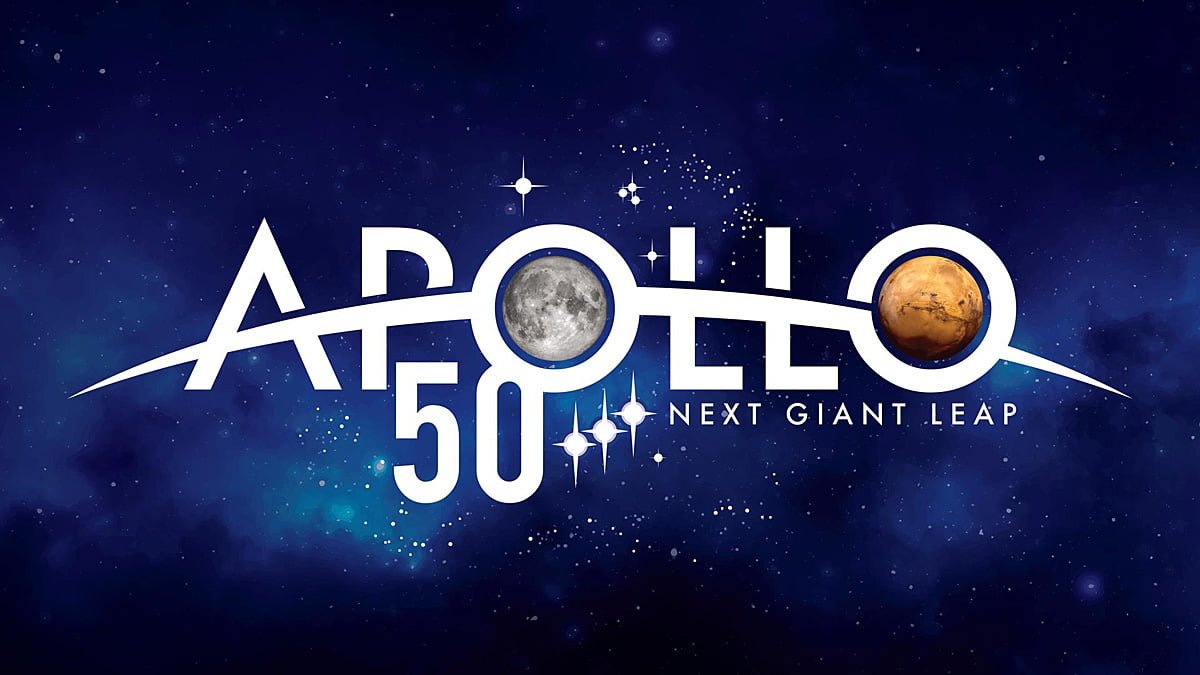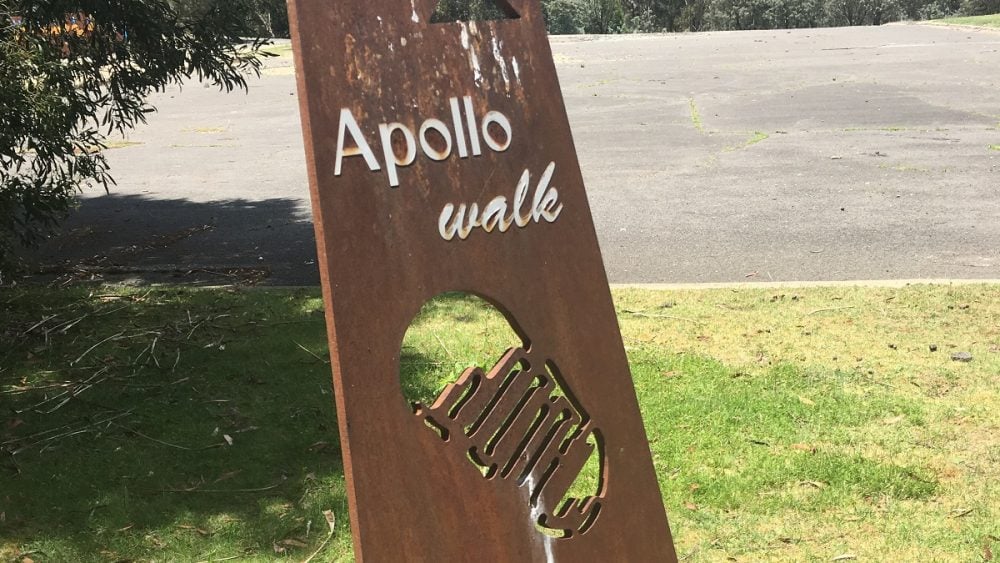
When Neil Armstrong took his momentous “giant leap” on the Moon, he was buoyed by the efforts of an entire global community. Apollo 11 was commissioned by NASA but there were many other nations involved with the galactic achievement. Fifty years later and the same global community is coming together to celebrate the anniversary of the Lunar Landing, starting with the country that captured the first images: Australia.
Australia’s Role in the Lunar Landing
Australians were the first to watch the Lunar Landing, ahead of everyone else in the world.
By around 0.3 seconds.
Face it: if it wasn’t for the radio telescopes in Australia, no one would have seen any of this happening at all! NASA needed “eyes in the back of their head” or more accurately, eyes on the other side of the planet. In addition to the Goldstone Tracking Station in California, NASA relied on its own Honeysuckle Tracking Station outside Canberra (the Australian national capital), and the CSIRO’s Parkes Radio Telescope, located about 350km west of Sydney in rural New South Wales.
And then it almost didn’t happen. Originally, the astronauts were scheduled to rest before attempting the moonwalk, which would have timed the Moon to be perfectly placed directly over Parkes. However, Armstrong and Aldrin were too excited to wait and moved the schedule up a few hours.
During this time, severe winds hit the Parkes Dish. Reaching speeds of 110km per hour, the entire telescope structure was at risk of toppling. While the astronauts were dressing into their spacesuits and preparing the cabin, the Parkes staff were working to maintain the integrity of the Dish and the signal to be received. The first nine minutes of the Lunar Landing was subsequently captured by the Honeysuckle Tracking Station before switching over to the higher quality images captured by the Parkes Dish. The images from Parkes were so good, NASA chose to stay with Parkes for the remaining two-and-a-half hours of broadcasting.

And for the record, if Armstrong and Aldrin had waited, the winds would have completely calmed and none of this would have happened. But history has always had a flair for the dramatic.
So how did this give Australia a 0.3-second headstart on the broadcast around the world? Each of the signals received by Honeysuckle and Parkes was sent to Sydney via specially installed microwave links. From there, the TV signal was split: one going to the Australian Broadcasting Commission (ABC) studios for distribution to Australian television networks, the other went to Houston for the international telecast. Since the international signal had to travel halfway around the world via satellite over the Pacific Ocean, it experienced a 300-millisecond delay.
And that’s why Australia will start the party first.
Where to Party: Honeysuckle Tracking Station, Canberra
The first nine minutes of the lunar landing were captured by Honeysuckle Tracking Station, located outside Canberra. The Radio Telescope itself is no longer there, being decommissioned in 1981 and moved to the Canberra Deep Space Communications Complex (CDSCC), where it was used as part of the Deep Space Network until late 2009 (along with other missions like Cassini). The Radio Telescope has since been declared a Historic Aerospace Site and remains at the CDSCC in peaceful retirement.
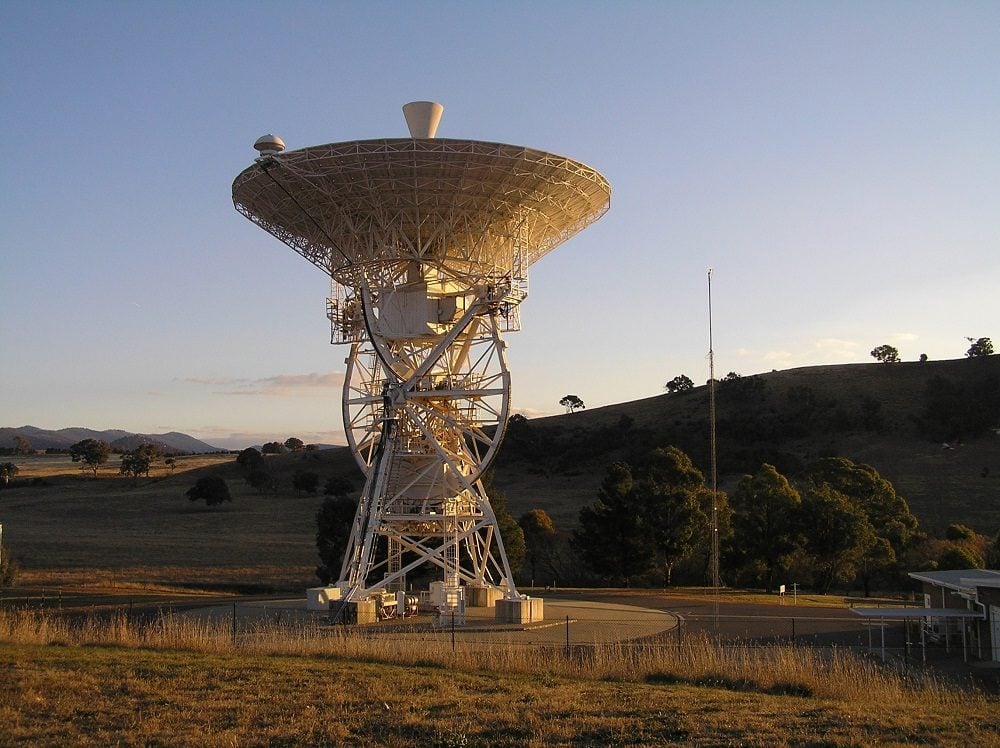
The CDSCC is kicking off the Apollo 50th celebrations, starting with Honeysuckle and the original Radio Telescope. On Saturday, July 20, the original team from the Honeysuckle Station will be joined by special guests and dignitaries to unveil new art installations to commemorate the historic significance of Honeysuckle. Although closed to the public for the Lunar Landing weekend, from Sunday 21 July campers will be able to check out the new installations and be inspired to continue their own “space journey” with some stargazing.
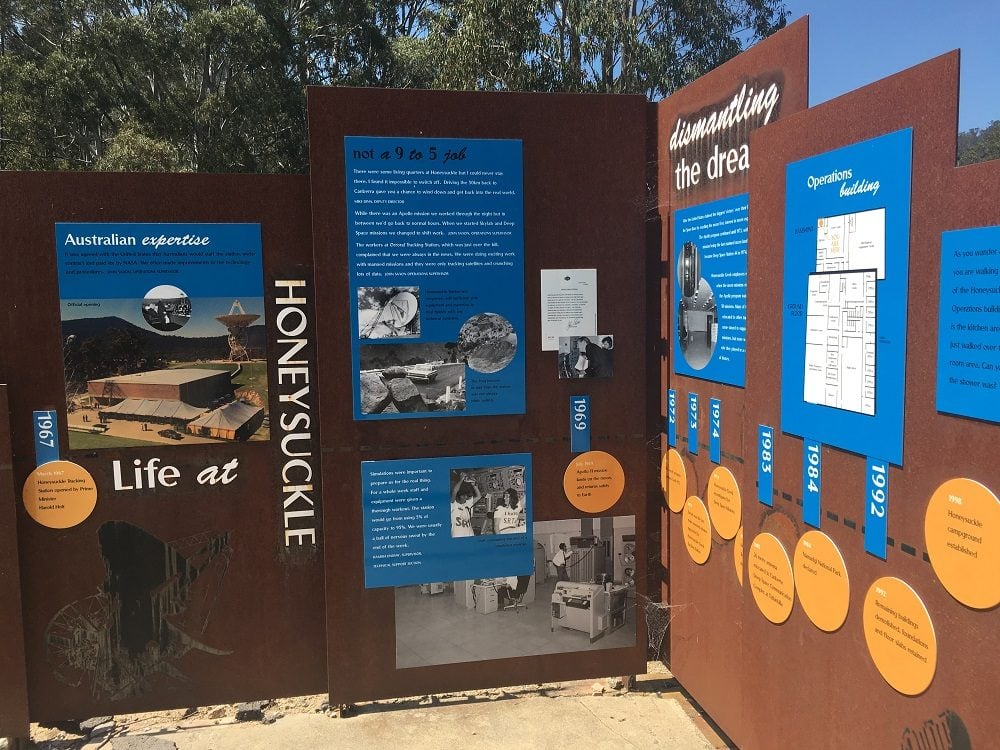
The celebrations continue on Sunday, July 21 with a Free Open Day at the CDSCC at Tidbinbilla. There is a special Moon Exhibit, tours of the original Honeysuckle Radio Station, and the re-broadcast of the original Moon Walk timed to coincide with the exact moment 50-years ago, at 12.56pm local time.
Throughout Canberra, there are even more great events. Check out the Mt Stromlo Observatory, Questacon Science Centre, and the Australian National University for more information.
Extra note: The Honeysuckle Campgrounds are a great place to start your Space Weekend in Canberra, although July is one of the coldest months to do so. For more details about a Space/Camp experience with the Honeysuckle Grounds, check out my post here.
Where to Party: Parkes Radio Telescope
Honeysuckle Tracking Station may have been first but the Parkes Radio Telescope was the best. As mentioned above, the images from Parkes were such high quality, NASA chose to stay with the Parkes broadcast for the full two-and-a-half hours.
As part of the Apollo 50th Anniversary celebrations, the Parkes Dish is putting on its own huge party. Not to be outdone but the Honeysuckle crew again, Parkes is holding TWO Open Days across the entire weekend! The CSIRO (Australia’s Commonwealth Scientific and Industrial Research Organisation) is hosting the party, with tours of The Dish, a screening of the movie The Dish, and, of course, a re-broadcast of the original walk on the moon, synched at the same time just 50-years later.
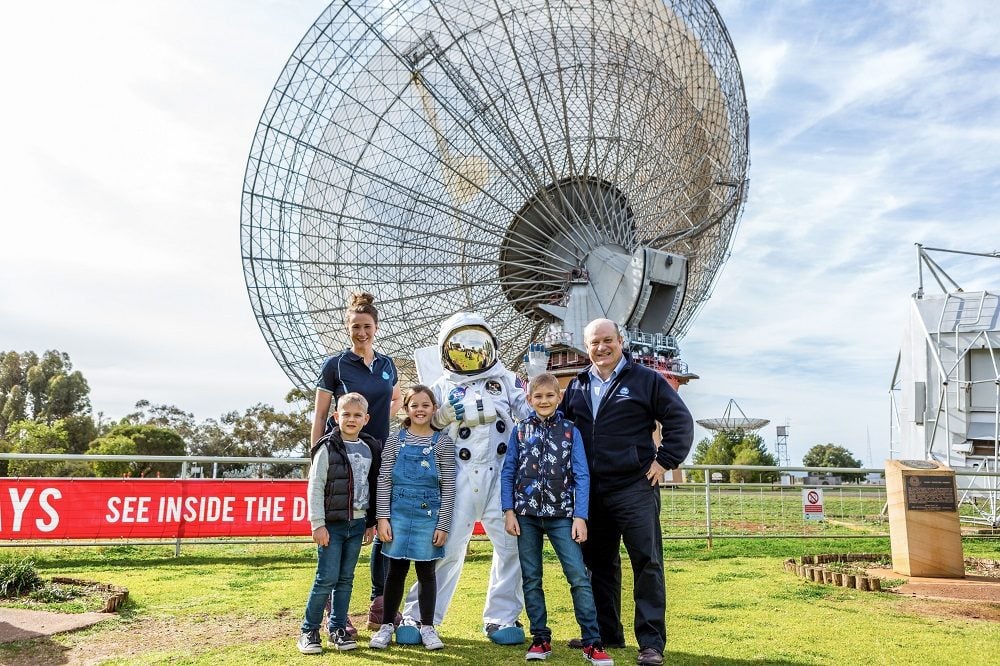
For more information, check out the CSIRO site and the Apollo 11 Celebrations.
Further Apollo 50th Celebrations Around Australia:
Sydney
The Powerhouse Museum is hosting the special Apollo 11 exhibit from now until January 2020. It includes over 200 objects from the mission as well a new VR experience to watch the Moon landing from the perspective of Michael Collins, the third astronaut from Apollo 11 who remained in orbit aboard the Command Module. The exhibit will be open with other special Apollo 50th commemorative events on Sunday, July 21 and will coincide with the Luke Jerram installation Museum of the Moon. Details can be found on the Powerhouse Museum website.
Canberra
The Questacon National Science and Technology Centre has a special Apollo 50th Anniversary exhibit to complement its regular “Science of Space” displays. After you check out the models, computers, and artifacts from the Moon Landing, spend some time in the education exhibition where you can launch a pinball “rocket” to the Moon! Discover how gravity affects weight! And my personal favorite, learn how to balance a space capsule to achieve a perfect landing! Let it be known by all: EG Mum is the Queen of Parking Space Capsules. For more details, head over to the Questacon website.
Brisbane
The Queensland Museum is hosting the NASA exhibit “A Human Adventure” from March 15 to October 9, 2019. For the Qld touch to the celebrations, the Queensland Museum is holding an After Dark 1969 party—dress up, of course. However, don’t party too late because the next day is the Big Celebration and you are invited to join the biggest MOONWALK across the Queen Street Mall, followed by further Moon-related celebrations back at the Museum. Check out the details on their website.
Do you know of any other celebrations for the 50th Anniversary of the Lunar Landing? Hit us up in the comments! And tag @geekmomblog in your social media pics—we love to see what you get up to!
And stay tuned for more Apollo 50th Celebrations across the GeekMom and GeekDad sites!
